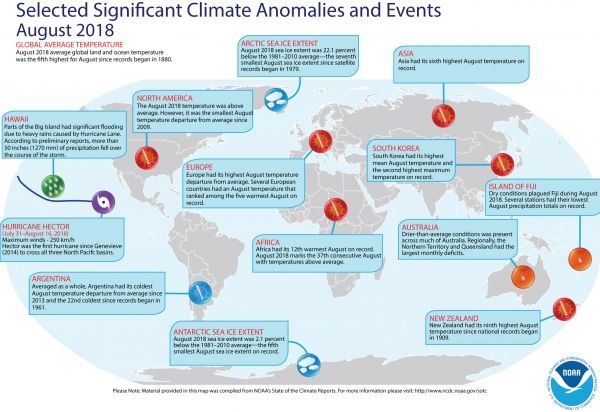As anticipated, Hurricane Florence resulting in monumental rainfall totals, particularly across southern and eastern North Carolina. This past week’s rainfall totals are depicted in Figure 1, derived from the NOAA/National Weather Service Advanced Hydrologic Prediction Service (AHPS). Widespread totals exceeded 10” across most of southern/eastern North Carolina and far eastern South Carolina, with maximum rainfall of more than 20” along and within a few counties of the Atlantic Coast.
articles
Ocean Acidification May Reduce Sea Scallop Fisheries
Each year, fishermen harvest more than $500 million worth of Atlantic sea scallops from the waters off the east coast of the United States. A new model created by scientists at the Woods Hole Oceanographic Institution (WHOI), however, predicts that those fisheries may potentially be in danger. As levels of carbon dioxide increase in the Earth’s atmosphere, the upper oceans become increasingly acidic—a condition that could reduce the sea scallop population by more than 50% in the next 30 to 80 years, under a worst-case scenario. Strong fisheries management and efforts to reduce CO2 emissions, however, might slow or even stop that trend.
August 2018 was 5th hottest August on record for the globe
Besides ushering in the fifth hottest August, steady heat through the first eight months of 2018 made it the fourth warmest year to date for the planet.
NASA Sees Areas of Strength in Tropical Storm Trami
NASA’s Terra satellite provided an infrared look at Tropical Storm Trami, located just over 100 miles from Guam on Sept. 21. Infrared data provides temperature information that showed two areas of the highest, coldest cloud tops and most powerful storms within the tropical storm.
Light Pollution Makes Fish More Courageous
Artificial light at night also makes guppies more courageous during the day, according to a behavioural study led by researchers from IGB and the Max Planck Institute for Human Development. Exposing fish to artificial light at night, not only made fish more active during the night, but also made them emerge quicker from hiding places during the day, which could increase their exposure to predators. Nocturnal lighting, however, did not affect their swimming speed or social behaviour during the day.
New battery gobbles up carbon dioxide
A new type of battery developed by researchers at MIT could be made partly from carbon dioxide captured from power plants. Rather than attempting to convert carbon dioxide to specialized chemicals using metal catalysts, which is currently highly challenging, this battery could continuously convert carbon dioxide into a solid mineral carbonate as it discharges.










